Shashi Prakash's Blog: Connecting The Dots, page 7
July 31, 2015
One Of The Best Motivational Videos
“So you have to trust that the dots will somehow will connect in your future
You have to trust in something
Your gut, destiny, life, karma, whatever.
Because believing that the dots will connect down the road
Will give you the confidence to follow your heart,
Even when it leads you off the well worn path.
And that will make all the difference.
Your time is limited,
So don’t waste it living someone else’s life
Don’t be trapped by dogma :
Which is living with the results of other people’s thinking
Don’t let the noise of other opinions drown out your own inner voices.
You’ve got to find what you love
And that is true for works
as its for your lovers
your work is gonna fill a large part of your life
And the only way to be truly satisfied
Is to do what you believe is great work
And the only way to do a great work
Is to love what you do
If you haven’t found it yet
Keep looking and don’t settle
Have the courage to follow your heart and intuition
There somehow, already know
What you truly want to become.” – Steve Jobs.
That you going to have some ups and you’re going to have some downs
Most people gave up on themselves easily
You know that a human spirit is powerful?
There is nothing as powerful – its hard to kill the human spirit!
Anybody can feel good when they have their health, they bills are paid, they have happy relationships
Anybody can be positive then,
Anybody can have a large of vision then
Anybody can have a lot of faith under those kind of circumstances
The real challenge of growth, mentally, emotionally and spiritually
Comes when you get knocked down
It takes courage to act
Part of being hungry when you’ve been defeated
It takes courage….
To start over again
Fear kills dream
Fear kills hope
Fear….put people in the hospital
Fear can age you
Can hold you back from doing something that you know within yourself that you are capable of doing,
But it will paralyzed you
At the end of your feelings is nothing,
But at the end of every principles is a promise
Behind your little feelings, it might not be absolutely nothing at the end of your little feelings
But behind every principles is a promise
And some of you in your life
The reason why you are not in your goal right now, because you just all about your feelings
All on your feelings, you don’t feel like waking up, so who does?
Everyday you say ‘no’ to your dreams,
You might be pushing your dreams back a whole six months, a whole year!
That one single day, that one day you didn’t get up could have pushed your stuff back I don’t know how long
Don’t allow your emotion to control you
We are emotional but we wanna begin to discipline your emotion
If you don’t discipline and contain your emotion, they will use you
You want it and you’re going to go all out to have it
Its not going to be easy, when you want to change
Its not easy. If it were in fact easy, everybody would do it
But if you’re serious, you’ll go all out
I’m in control here
I’m not going to let this let this get me down, I’m not going to let this destroy me!
I’m coming back!
And I’ll be stronger and better because of it
You have got to make a declaration
That this is what you stand for
You standing up for your dream
You standing up for piece of mind
You standing up for health
Take full responsibility for your life
Accepts where you are and the responsibility that you’re going to take yourself where you want to go
You can decide that I am going to live each day as if it were my last
Live your life with passion
With some drive
Decide that you are going to push yourself
The last chapter to your life has not been written yet
And it doesn’t matter about what happened yesterday
It doesn’t matter about what happened to you, what matter is
What are you going to do about it?
This year I will make this goal become a reality
I wont talk about it anymore
I Can
I Can!
I CAN!
To persevere I think its important for everybody
Don’t give up, Don’t give in
There’s always an answer to everything
Published on July 31, 2015 10:31
Did Neil Armstrong landed on the moon? Are you serious!
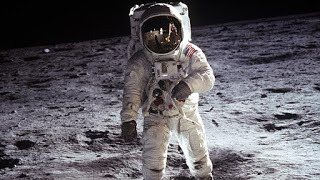
History has recorded the fact that Neil Armstrong and Edwin Aldrin were the first human to walk on the moon on July 20, 1969. But some people believe that the moon landing was a hoax carried out by NASA. They have studied the photographs and they are convinced that they are fake. Why do they say this? Here are some arguments in support of this theory.
1. Thousands of pictures were taken by the astronauts and not a single one was blurred. This is quite unbelievable, considering the fact that the astronauts were wearing heavy gloves that would make handling a camera awkward. Moreover some of the still photos matches the film footage, though NASA claims that they were taken at the same time.
2. We know that outer space is awash with deadly radiation from the sun. You will need a shield of at least 2 m thickness to be protected against this radiation. Yet the walls of the lunar module were only the thickness of a duty aluminum foil.
3. We know that there is no atmosphere on the moon, and since there is no air, there can be no wind. Yet the American flag is shown fluttering in the wind.
4. It is strange to notice that the dent made by the astronaut’s feet on the moon was deeper than dent made by the module which weighed 14 tons.
5. There was no delay in the answers that came from the astronauts to the questions asked by NASA. This again seems strange, because there is always delay even today when you are making a telephone call to another continent via satellite
Published on July 31, 2015 10:08
July 15, 2015
Amazon Kindle: Your Way, Your Words
 "You can’t connect the dots looking forward. You can only connect them looking backward." - Steve Jobs.
"You can’t connect the dots looking forward. You can only connect them looking backward." - Steve Jobs.Years before I made a habit of writing. I used to write about anything that used to affect me. I tried to learn about it. I tried to rectify my mistakes and I tried to give my best. None of this had even a hope of any practical application in my academics. But years later, it has all came back to me. It took me more than a year but finally I have finally completed and published my novel 'The Cut-Off List'. It didn’t happen in months. It took me more than a year. But I continued. I continued because I believed and I believed because it was something that I loved to do. I trusted in something and finally i have fulfilled my dream that I had tamed in my heart for the last so many years.
Of course it was impossible to connect the dots looking forward when I was in primary classes. But it is very, very clear looking backward years later.
Check out my first book 'THE CUT-OFF LIST' on amazon: http://www.amazon.in/dp/B011BY9PBS/
Check out my page at amazon: www.amazon.com/author/shashiprakash
It will be great to have your views and reviews.
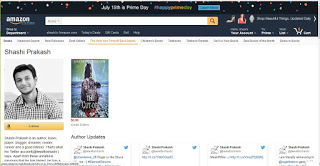
Published on July 15, 2015 02:48
July 12, 2015
Why Twitter is better than Facebook.

Go to google.com and then type “what is better” and then a series of suggested results will begin to pop-up like Android or iOS, AMD or Intel, LED or LCD, 4G or LTE and the list continues. Apart from these questions, there was one more question that was often darting across the screen and that was what is better, Twitter or Facebook?I know this is a tough question indeed and many tech savvy have tried to put their argument forward in this context. It’s Twitter Vs Facebook. Some have supported the former while the rests have supported the latter one. And then I thought to pen down my views. Having spent few years on both of the social media I hereby have concluded on few points. The title of this article is not the verdict and the following views are completely mine, and have not been written down to hurt anybody’s sentiments. :D
“READERS DISCRETION IS ADVISED.”
1. Retweet: when we see something catchy in our feed in Facebook, what we do the first and last thing is that we like the post and comment on it. We don’t share it at the very first impression. And that is different in case of Twitter. People don’t show any type of hesitation in retweeting in comparison of sharing in Facebook.
2. Follow: in Facebook there are two kinds of people one are having simple profile in which you can send friend requests and the other one is in which you can like the page. But in Twitter everyone has same kind of profile. The only basic difference lies on the fact that whether you are verified or not. Although the same thing was copied later by Facebook.
3. Trending: it gives you the quick glimpse of all the events going around the world. And one thing that is one of the most important about this feature is that nothing gets past the eyes of trending. It may be any derogatory statement made by any politician or any hike in the price of fuel. It immediately makes the public to react upon and eventually the topic begins to trend in the particular country and sometime worldwide.
4. Lists: Is it possible that you may get updates from very selective person and few pages on Facebook. It isn’t possible and lists feature gives an edge to Twitter over Facebook in this regard. You can make a list and can add members of your interests and then you will only see what you want to see in your screen.
5. Post vs tweet: I have been using Facebook for many years but I haven’t posted enough things as much as I have tweeted in Twitter. I can tweet on the go. I can tweet about anything but before making a post on Facebook one thinks and pays his time in framing the content and doesn’t do that instantly.
6. Immediatereaction: let’s take a recent example when a 7.9 intensity earthquake had hit the capital valley of Nepal. My parents called me to know about my well-being and also recited their horrific experience. They were not knowing about the epicenter nor was I. I searched it on Twitter and then it got flooded with the reactions. People from Kathmandu to Delhi were tweeting about the incident which gave me a rough idea about the incident and the areas where it had made its mark. The same incident was posted in Facebook too but there was a considerable delay.
7. #Hashtag: # is available on Facebook but it’s not used so intense as it is used in Twitter. Chris Messina is often credited for the use of hashtag for the first time on Twitter. Eventually Facebook copied it later. Using a hashtag you can get a plethora of info regarding any topic.
8. More exposure: you get definitely get more exposure on Twitter. I had tweeted once about Camtasia and the verified account of the company had itself responded to the tweet. I also got opportunity to interact with many writers around the world and also with few CEOs. I think that might never would have happened on Facebook. Most of the fortune 500 companies have their accounts on Twitter rather than Facebook.
9. Remainalerted: there are many influential person in this world and you would never want to be on the shore when the ship is in the storm. Twitter helps you to remain updated about your famous idols by their in built feature which allows you get instant message on your cell as soon as they tweet.
10. Downtownof Diplomacy and sports: Well most of the politicians are on Twitter than on Facebook. Also those politicians that have their account on both of the platforms tweet often rather than posts and that a fact that no one can deny. And in the recent years tweets from the eminent personalities have been driving the diplomacy.
Some of the famous tweets includes tweet from Andy Murray who had given his views on Scottish independence referendum. Another important tweet was from David Cameron when he tweeted about dementia in December. Some said that it was a tweet sent during a cabinet meeting and subsequently made history for being it first of kind. One of another interesting and controversial tweet was from Roger Federer when he had posted a pic of himself along with Indian Cricket team Jersey with the hashtag #BleedBlue (the color referred to the color of the t-shirt of the Indian cricket team). Roger Federer ran into problem as the cricket fans across the world begin to accuse him of being biased and were angry for supporting Indian team. Roger also gave a clarification on this regard later.
11. Tweets has made newsmakers job an easy one: Want to make an article on some of burning topics? Well it has become one of the easy tasks on web. The basic principle behind this theory is ‘the article will contain 25% content from them and the rest will be contributed by us’. They do write one paragraph about the incident and they flood the rest of the article with the tweets from the people from around the world.
12. Special zone for special events: Do you remember how it was easy to get score of playing nation easily during ICC cricket world cup on Twitter. They had made a special timeline for that purpose so that fans couldn’t miss any moment of the matches. And IPL (Indian premier league) was no different. They made a special timeline again for the IPL. They moved step forward and launched a feature called ‘Missed call to follow IPL’. This is the statement from the press release. “ Fans who give a missed call to IPL on 01130082008 will receive up to six tweets per day from @IPL that contain the hashtags #live as SMS This service is free and make the IPL even more accessible for fans as they can get Twitter updates from IPL even without internet connection. “
13. 140 characters: The limitation on the characters is one of the reason of success of Twitter. It makes a tweet crisp and precise one. You write within your limits as well as see others tweet within that limits. That gives you an overview of voluminous topics in less time frame.
14. Open in browser: I love this feature. It allows you to open any specific link within your application. And that page do appear without any ads and only content fills your screen. The similar feature is available with LinkedIn.
15. Translate by BING: if a particular tweet in in any other language like Nepali or Chinese, you can still get the essence of the message/tweet by the translation feature of Twitter. Translate by Bing allows you to translate the message in yours language. Bing search engine is used for the purpose. However there are some limitations as the translation goes wrong for most of the time but it allows to get the basic underlying message.
16. Do rivals talk? I don’t know about the behind the curtains scenario but they do talk on Twitter. Here are some instances.
a. These Twitter conversations have really caught on with many Internet companies. We have seen Olacabs indulging in conversations with its recently acquired TaxiForSure frequently. Just recently, a man made a bizarre request to Olacabs about choosing drivers on the basis of religion, and Olacabs shut him up by saying that they do not discriminate on the basis of religion. This response fetched Olacabs accolades from rivals like EasyCabs and Uber on Twitter.b. Red Bull, apart from its beverage, is known for the Red Bull Tour Bus in the country promoting independent music. Amazon then sarcastically said that they weren’t equipped with wings like Red Bull, to which Red Bull with an image of Amazon’s flying drone said, “Who says you don’t have wings already?” Here’s how the conversation panned out.

c. The latest comes from Amazon India and Zomato who interlocked on Twitter in witty word play. Amazon trying to promote its #AurDikhao campaign, tweeted at Zomato taking potshots on its frequent logo changes. Zomato cheekily replied by saying,”You should have seen the ones that didn’t make the cut” and attached an interesting image that showed Zomato aping the Amazon arrow pointing from A-Z.
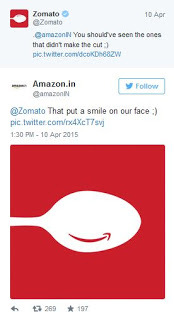

This was a neat marketing move from Amazon India’s digital marketing team. Even Zomato’s reply won the Internet, and Amazon again tried to one-up by embedding the arrow into Zomato’s new spoon logo. Amazon cheekily tweeted, “That put a smile on our face.” See the entire conversation below.
17. Refine results: when you search something on Facebook like Justin Bieber, it categorizes its search result under four sets People, Pages, Events and Groups. Nothing else. But in Twitter when you search Justin Bieber you can get sundry results and you can refine it too according to your choice. The engine is capable of showing only photos, news, videos, and comments from the people you follow or from the people near you or everything.
And that happens only on twitter.
Published on July 12, 2015 11:08
July 11, 2015
Steve Jobs said, “Journey is the reward”. And he was damn right.

If you are reading this article, don’t expect that I am going to recite those famous lines from Steve Jobs speech at Harvard. Well the point is to prove one of his famous lines with the help of science and theory.
o SCIENCE We all work. And we work expecting reward. We study expecting that it might help with our grade. We do hours and hours of workout in gym, figuring out how to throw a descent jab thinking that it might help to become the welter weight champion of the world. So we do work and we do expect rewards. The point that Steve Jobs wanted to make was that we should work but we shouldn’t do it entirely keeping the reward factor in our mind. That thing helps us out in few cases but also de motivates us to a great extent in majority of scenarios. Let’s talk some business rather than making baseless points. Rewards force us to consider our work in a limited way, even work that we might gain great satisfaction from doing without the promise of reward. In fact, offering incentives can limit not only one’s perception of the work but one’s ability to even do the work. Consider the “candle problem” (Refer author Dan Pink’s TED talk on the candle problem for more information). Subjects are seated at a table against a wall, given a candle, some matches, and a box of tacks, and told to work out a way to burn the candle without getting wax on the table. In one study, one group was offered money for figuring the puzzle out, while another wasn’t – and the subjects who were not offered any reward did remarkably better.
(The solution, by the way, is to empty the box of tacks and set the candle up inside of the box – most people ignore the box at first, because they see it only as a holder for the tacks and not as part of the equipment available to them. People working for a reward have a much harder time making the creative leap to seeing the box as part of the puzzle than people who are not being incentivized except by the pleasure of solving the puzzle itself.)So you saw that the group that was trying to figure out the solution keeping in view of reward did pretty badly. So we shouldn’t expect rewards? Well exactly not. You should rather enjoy work and think it of as your reward. Journey is the reward. Doing so will make you remain motivated throughout your all sorts of work.
Dopamine The origins of motivation: It’s in your head.What is dopamine? Dopamine is one of the chemical signals that pass information from one neuron to the next in the tiny spaces between them. When it is released from the first neuron, it floats into the space (the synapse) between the two neurons, and it bumps against receptors for it on the other side that then send a signal down the receiving neuron. That sounds very simple, but when you scale it up from a single pair of neurons to the vast networks in your brain, it quickly becomes complex. The effects of dopamine release depend on where it’s coming from, where the receiving neurons are going and what type of neurons they are, what receptors are binding the dopamine (there are five known types), and what role both the releasing and receiving neurons are playing.We normally associate dopamine with pleasure, but it has a far wider effect than that. Dopamine has been found to fire before a reward is given, in addition to showing up in times of stress, pain, loss or pleasure. As a result, dopamine levels are now believed to be strongly linked with motivation. Interestingly, one behavioral neuroscientist discovered that rats with lower dopamine levels weren’t willing to climb a small fence to get to a larger pile of food, compared to rats with higher levels of the hormone.Animals need to seek food for survival and dopamine helps them out in seeking. However Animals in which the VTA dopamine system has been rendered inactive do not seek food, and will starve to death if left to themselves, but if food is placed in their mouths they will consume it and show facial expressions indicative of pleasure.It’s clear that dopamine is the science behind motivation. And to remain motivated we need that our brain releases dopamine. But dopamine releases only when reward factor is associated with the job. Dopamine’s true effect may be motivation. Dopamine performs its task before we obtain rewards. And in that scenario if we just by Steve jobs line then it would be quite easier for us to remain motivated as then our journey would be the reward (the factor behind the release of dopamine)
.o THEORY Temporal motivation theory (TMT) is an integrative motivational theory. Developed by Piers Steel and Cornelius J. König, the theory emphasizes time as a critical, motivational factor.

Where Motivation, the desire for a particular outcome, Expectancy or self-efficacy is the probability of success, Value is the reward associated with the outcome, Impulsiveness is the individual’s sensitivity to delay and Delay is the time to realization.The theory also says that motivation is closely associated with the value factor. The value is the reward that one will get after completion of the job. And in this scenario too if we remain by Steve jobs line then it would be quite easier for us to remain motivated as then our journey would be the reward.
To see how temporal motivation theory can be applied in an example, consider a student given one month to study for a final exam. The student is given two options—studying and socializing. The student enjoys socializing but needs to achieve a good grade. The reward of studying is not immediate thus at the beginning of the student's study period, the motivation to study is lower than the motivation to Socialize. However, as the study period diminishes from several weeks to several days, the motivation to study will surpass the motivation to socialize.
Published on July 11, 2015 06:14
May 18, 2015
Cinderella effect

In order to understand this effect you need to know the story. I know that you had read it in your childhood day but I need you to read it one more time to understand it better.
Once upon a time, there was a beautiful girl named Cinderella. She lived with her wicked stepmother and two stepsisters. They treated Cinderella very badly. One day, they were invited for a grand ball in the king’s palace. But Cinderella’s stepmother would not let her go. Cinderella was made to sew new party gowns for her stepmother and stepsisters, and curl their hair. They then went to the ball, leaving Cinderella alone at home.Cinderella felt very sad and began to cry. Suddenly, a fairy godmother appeared and said, “Don’t cry, Cinderella! I will send you to the ball!” But Cinderella was sad. She said, “I don’t have a gown to wear for the ball!” The fairy godmother waved her magic wand and changed Cinderella’s old clothes into a beautiful new gown! The fairy godmother then touched Cinderella’s feet with the magic wand. And lo! She had beautiful glass slippers! “How will I go to the grand ball?” asked Cinderella. The fairy godmother found six mice playing near a pumpkin, in the kitchen. She touched them with her magic wand and the mice became four shiny black horses and two coachmen and the pumpkin turned into a golden coach. Cinderella was overjoyed and set off for the ball in the coach drawn by the six black horses. Before leaving. The fairy godmother said, “Cinderella, this magic will only last until midnight! You must reach home by then!”When Cinderella entered the palace, everybody was struck by her beauty. Nobody, not even Cinderella’s stepmother or stepsisters, knew who she really was in her pretty clothes and shoes. The handsome prince also saw her and fell in love with Cinderella. He went to her and asked, “Do you want to dance?” And Cinderella said, “Yes!” The prince danced with her all night and nobody recognized the beautiful dancer. Cinderella was so happy dancing with the prince that she almost forgot what the fairy godmother had said. At the last moment, Cinderella remembered her fairy godmother’s words and she rushed to go home. “Oh! I must go!” she cried and ran out of the palace. One of her glass slippers came off but Cinderella did not turn back for it. She reached home just as the clock struck twelve. Her coach turned back into a pumpkin, the horses into mice and her fine ball gown into rags. Her stepmother and stepsisters reached home shortly after that. They were talking about the beautiful lady who had been dancing with the prince.The prince had fallen in love with Cinderella and wanted to find out who the beautiful girl was, but he did not even know her name. He found the glass slipper that had come off Cinderella’s foot as she ran home. The prince said, “I will find her. The lady whose foot fits this slipper will be the one I marry!” The next day, the prince and his servants took the glass slipper and went to all the houses in the kingdom. They wanted to find the lady whose feet would fit in the slipper. All the women in the kingdom tried the slipper but it would not fit any of them. Cinderella’s stepsisters also tried on the little glass slipper. They tried to squeeze their feet and push hard into the slipper, but the servant was afraid the slipper would break. Cinderella’s stepmother would not let her try the slipper on, but the prince saw her and said, “Let her also try on the slipper!” The slipper fit her perfectly. The prince recognized her from the ball. He married Cinderella and together they lived happily ever after.So this was the story part. Now let’s talk some business. In evolutionary psychology, the Cinderella effect is the alleged higher incidence of different forms of child-abuse and mistreatment by stepparents than by biological parents. BackgroundIn the early 1970s, a theory arose on the connection between stepparents and child maltreatment. "In 1973, forensic psychiatrist P. D. Scott summarized information on a sample of "fatal battered-baby cases" perpetrated in anger (…) 15 of the 29 killers – 52% – were stepfathers.” Although initially there was no analysis of this raw data, empirical evidence has since been collected on what is now called the Cinderella effect through official records, reports, and census.For over 30 years, data has been collected regarding the validity of the Cinderella effect, with a wealth of evidence indicating a direct relationship between step-relationships and abuse. This evidence of child abuse and homicide comes from a variety of sources including official reports of child abuse, clinical data, victim reports, and official homicide data. Studies have concluded that "stepchildren in Canada, Great Britain, and the United States indeed incur greatly elevated risk of child maltreatment of various sorts, especially lethal beatings". Studies have found that not biologically related parents are up to a hundred times more likely to kill a child than biological parents.Powerful evidence in support of the Cinderella effect comes from the finding that when abusive parents have both step and genetic children, they generally spare their genetic children. In such families, stepchildren were exclusively targeted 9 out of 10 times in one study and in 19 of 22 in another. In addition to displaying higher rates of negative behaviors (e.g., abuse) toward stepchildren, stepparents display fewer positive behaviors toward stepchildren than do the genetic parents. For example, on average, stepparents invest less in education, play with stepchildren less, take stepchildren to the doctor less, etc. This discrimination against stepchildren is unusual compared with abuse statistics involving the overall population given "the following additional facts: (1) when child abuse is detected, it is often found that all the children in the home have been victimized; and (2) stepchildren are almost always the eldest children in the home, whereas the general (…) tendency in families of uniform parentage is for the youngest to be most frequent victims."
References:http://en.wikipedia.org/wiki/Cinderella_effecthttp://shortstoriesshort.com/story/cinderella-beautiful-girl/
Published on May 18, 2015 18:42
May 16, 2015
Hyundai : A Message to Space
I liked this news
Hyundai has helped a 13-year-old girl named Stephanie send a message to her father. The reason sending a message is so hard is that the girl's father is an astronaut aboard the ISS. To send the message, Hyundai sent a fleet of 11 Genesis cars to write a message that spanned a space as large as about half of New York's Central Park.
The message was written using tire tracks from the cars and the finished message spanned 5.55 square kilometers and could be seen from the ISS. The massive message received a Guinness World Record for the largest tire track image ever created.
 The message was written at Delmar Dry Lake in Nevada. Making the message took more than 11 cars and drivers able to synchronize movements; it required a large number of support personnel. The message also had to be planned out meticulously because one mistake could ruin the entire plan.
The message was written at Delmar Dry Lake in Nevada. Making the message took more than 11 cars and drivers able to synchronize movements; it required a large number of support personnel. The message also had to be planned out meticulously because one mistake could ruin the entire plan.Hyundai's team went on expeditions to several locations seeking an area to write the message that would have the ideal weather and visibility. Eventually the location in Nevada was chosen. Check out the video to see how Hyundai and its team created the message.
source: 1. https://www.youtube.com/watch?v=3EOAX...
2. http://www.slashgear.com/hyundai-help...
Published on May 16, 2015 22:08
May 4, 2015
AIR POLLUTION: ACT OR ITS TOO LATE
Well the topic seems to be boring one. It has been one of our concerns from the time when we were in kindergarten (as I remember) and it still persists and bothers us. Still what we are doing is just talking about planting trees and other less pragmatic methods and solutions. Here I have tried to cover the seriousness of the issue as well as have tried to explain some very practical solutions. Hope you will find it benefitting one.
To specify things and to pen down my matter in precise manner, I have taken Raipur as my subject city. Raipur is the capital city of Chhattisgarh. Having 24 hour electricity, major educational institutions (NIT, IIM) in its heart and having good administrative track record makes Raipur a perfect city to live in. But then I come across this news and then I think that somewhere in hurry of becoming a megacity, Raipur missed something and the coming generation have to pay that cost.

When it comes to air pollution, a World Health Organization (WHO) report concluded that Raipur has gained the dubious distinction of being the third worst city in India and has found its way on the list of top twenty polluted cities in world. Environmentalists fear that it's only a matter of time that this city would top the list, if urgent steps aren't taken to improve the air quality. And if local researchers and environmentalists are to be believed, the annual average levels of PM10 is 700 per cubic meter in some areas of city, which is 11 times more than Central Pollution Control Board's prescribed safe limit of 60 micrograms per cubic meter.What is PM10?Particulate matter is the collective term used to describe very small solid, liquid or gaseous particles in the air. Some of these particles are big enough to be seen while others are so small that they are invisible to the human eye and small enough for us to inhale. A PM10 particle is less than 10 micrometers (9m) in size, or one fifth of the diameter of a human hair. PM10 comes from man-made sources such as burning coal, oil, wood and light fuel oil in domestic fires, motor vehicles and industrial processes. Natural sources of particles include sea salt, dust, pollens and volcanic activity. FACTORS RESPONSIBLE FOR THE CURRENT SCENARIO 1. Sudden increase in the number of vehicles.2. Toxic industrial waste.3. Domestic waste.According to a reliable source state's industrial policy does not protect the interests of local people and the environment. Many sponge iron units have come up in the area and many others are in the process. It is estimated that approximately 10,000 tons coal is used by functional sponge iron units. Some small-scale industries, like nearly 50-60 brick kilns, are also mushrooming around Raipur. A study by NGM says most of these kilns operate as Bull Trench Kilns and don't follow the norms of Fixed Chimney methods. Their wastes cause rspm content to exceed the permissible limit by over four-five per cent. Air pollution caused by their contaminants affects an area of up to 10 square kilometers (sq. km) during winters and monsoons and 25-30 sq. km during summer.
SOLUTION
There are various realistic ways through which we can tackle this problem. 1. We can plant trees and organize ‘Vanmahotsav’. Someone has said that “ If trees were to double as Wi-Fi antenna wed be living in a greener planet and spend more time in parks than in pc”2. We can install Air quality monitors which can be installed in each and every home of Raipur city as it is quite affordable and inexpensive.

AirCasting is a platform for recording, mapping, and sharing health and environmental data using your smartphone. Each AirCasting session lets you capture real-world measurements, annotate the data to tell your story, and share it via the Crowd Map.
Using the AirCasting Android app, AirCasters can record, map, and share: Sound levels recorded by their phone microphone;Temperature, humidity, carbon monoxide (CO) and nitrogen dioxide (NO2) gas concentrations recorded by the Arduino-powered AirCasting Air Monitor;Heart rate, heart rate variability, R to R, breathing rate, activity level, peak acceleration and core temperature measurements.

Air quality sensor are very cheap. As shown above it is of maxm. Rs. 600. Along with it we need an Arduino board which costs approx rs. 800 and now all we need is a smartphone through which we can get update on the current level of pollutants in air.

The code and the application are open sourced by the developer and one needs not panic about it. One can install in his/her home by his own and can be conscious about the air pollution.
3. Generally after using appliances we switch off the appliance but often forget to unplug it from socket board. Some of the facts are pointed below that will make you ponder on your decision aftermath when you don’t unplug your appliance.Your microwave consumes 3.5W when plugged in and not in use (that’s 35 mobile phone chargers worth), printer draws 5.9W when on and not actually printing (59 mobile phone chargers worth), Nintendo Wii draws a whopping 9.5W when on and not in use (95 mobile phone chargers worth), even cradles for cordless home phones can be consuming 8 times more electricity than mobile phone chargers.

4. Site giving real time data about the air quality standards so that there could be partiality and we could feel as well see the changes. Many countries have did so early and we are lagging behind them. For instance in China, real time updates are made on their site and even we could see that and learn many things.

Source: http://aqicn.org/city/beijing/m/5. Car pooling and by using public transport as much as we can.6. Travel lightly and remove any unnecessary items that may weigh down your vehicle.7. Store all solvents in airtight containers.8. Print and photocopy on both sides of paper.9. Bring your lunch or walk to a nearby restaurant to reduce auto emissions.
So from above methods we could get an outlay to minimise air pollution. We can even contribute our part by instaliing air quality monitor in our departments. There are various other methods by which we can control air pollution.And we can contribute our bit, and we must do that.
Published on May 04, 2015 00:52
May 2, 2015
Serendipity: how the vogue word became vague
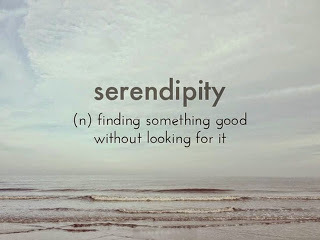
In the history of human scientific progress chance discoveries have played a major role. But the chance finds have always succeeded in hogging the limelight only when followed by careful and systematic scientific analysis.
What does the discovery of America, Teflon, and cornflakes have in common? They were all the results of serendipity. Serendipity is defined as the ability of making fortunate and unexpected discoveries by accident. This term has an interesting origin. It was coined in 1754, by an English novelist- Horace Walpole. Horace enjoyed foraging through reference works for information, and once chanced upon what he called ‘an exotic fairy tale’ that caught his imagination. It was the story of three princes of Serendib who were highly trained in arts and sciences. (Serendib was the anglicized version of swarnadweepa- Sone ki lanka, the old name of Srilanka). The three princes were privileged individuals not only gifted by their noble origin but also endowed with a unique talent: the gift of casual discovery. These three individuals were able to find answers to questions or mysteries they were not in search of. Thanks to their natural sagacity they would solve unexpected dilemmas. Stopping at an inn on evening, they met a distraught man who had lost his camel. Although the three princes had not seen the camel, they asked the camel driver if the lost camel was blind in one eye, missing a tooth, and lame. This description were based on signs they had observed along their way. They also deduced that it probably carried a load of butter on one side and honey on the other, and was ridden by a pregnant woman. After this detailed description of the camel, the camel driver was convinced that the three princes had stolen his camel, and they were imprisoned. Later on, when the camel was found, the princes were released. Horace must have found the gift of the three princes’ sublime. Though quite difficult to describe, he invented an expressive little word for their unique gift- SERENDITY. Keep that mind open In examining many of science’s most famous moments, serendipity has played a crucial role and we owe a debt to serendipity for some of the greatest discoveries in science. However, one needs to be aware that many of the principal beneficiaries of serendipity ‘clearly recognized’ the difference between an accident and an accidental discovery. In this context, Louis Pasteur put forth the famous quote, “inthe field of observation, chance favors only the prepared mind.”One of the most amazing accidental discoveries in science is the invention of Dynamite Swedish scientist Alfred Nobel in 1873. The invention was also fortuitous because it led to the creation of today’s Nobel prizes. It happened when Nobel was trying to control the super powerful explosive nitroglycerine, which had killed hundreds of people including Alfred’s brother, Emil. In the lab, Nobel combined many substances with nitroglycerine; but nothing defused the explosives unmanageability. One day, Nobel noticed that nitroglycerine was leaking from its storage casks and being soaked up by the diatomaceous earth used to pack and protect the containers. When he examined the leak, Nobel found the diatomaceous earth absorbed three times its own weight of nitroglycerine. Moreover, when dry, the mixture could be hit with by a hammer and even set afire without exploding. Only a blasting cap would set off the new explosive. Nobel become fabulously wealthy but was nonetheless troubled by the death and destruction caused by some who used dynamite for nefarious purposes or in warfare. To help offset some of the mayhem, he used his great wealth to set up a fund which stills provides the cash awards given out yearly along with the Noble Prizes. And the list goes on… For instance, the man whose name graces a thousand years- Charles Goodyear- worked out how to get rubber from an awkward material that melted in warm weather, when he accidently dropped a piece on a stove. And thus began an age in which natural substances could be altered through industrial processes. Neoprene was also serendipitous find made when a lab assistant left a chemical impurity in a test tube for over a weekend. A week and a half later, in the same laboratory, the first artificial fiber was created, also by accident by the scientist in charge, Wallace Carothers- a development that lead to nylon. In yet another incidence in the early 1950s, George de mestral while returning home after a walk in the countryside in Switzerland, noticed that his coat was covered with cockleburs. As he tried to pick them off, he wondered why they were so sticky. In search of an answer, he with the help of a microscope discovered that cockleburs are covered with hooks that became embedded in the loops of the fabric. This knowledge of the cockleburs spawned development of a product known as Velcro (derived from velvet and crochet). In another incidence, German physicians’ joseph von mering and Oscar minkowski removed pancreas from a healthy dog in order to study the role of pancreas in digestion. Several days after the dogs pancreas was removed, the doctors happened to notice a swarm os flies feeding on a puddle of the dog’s urine. On testing the urine to determine the cause of the flies’ attraction, the doctors realized that the dog was secreting sugar in its urine, assign of diabetes. Because the dog was healthy prior to the surgery, the doctors knew that they had created its diabetic condition by removing its pancreas and thus understood for the first time the relationship between the pancreas and diabetes. Examples of serendipity in science:1. 1. Polyethylene by Hans von Pechmann, who prepared it by accident in 1898 while heating diazomethane. 2. 2. Bioelectricity, by Luigi Galvani. He was dissecting a frog at a table where he had been performing experiments with static electricity. Galvani’s assistant touched an exposed sciatic nerve of the frog with a metal scalpel, which had picked up a charge, provoking a muscle contraction.3. 3. S.N. Bose discovered Bose- Einstein statistics when a mathematical error explained anomalous data. 4. 4. Electromagnetism, by Hans Christian Oersted. While he was setting up his material for a lecture, he noticed a compass needle deflecting from magnetic north when the electric current from the battery he was using was switched on and off. 5. 5. Discovery of the principle behind inkjet printers by a canon engineer. After putting his hot soldering iron by accident on his pen, ink was ejected from the pens point a few moments later. And the List goes on. References:1. 1. Science reporter, (Edition: May, 2008)2. 2. http://en.wikipedia.org
Published on May 02, 2015 19:11
May 1, 2015
WHY 'X' IS UNKNOWN
It is a question that we've all asked. The question is, why is it that the letter X represents the unknown? Now we know that it was learnt by us in our math class, but now it's everywhere in the culture -- The X prize, the X-Files, Project X, Mr. X. Where'd that come from?
Well the answer lies in Arabic language which turns out to be a supremely logical language. To write a word or a phrase or a sentence in Arabic is like crafting an equation, because every part is extremely precise and carries a lot of information. Algebra was born in the Middle East, during the Golden Age of medieval Islamic civilization (750 to 1258 AD), and its early form can be seen in the work of Muhammad Al-Khwarizmi and his 9th century book, Kitab al-jabr wal-muqabala (al-jabr later morphing into algebra in English). During this heyday, Muslim rule and culture had expanded onto the Iberian Peninsula, where the Moors encouraged scholarship in the sciences and math. That’s one of the reasons so much of what we've come to think of as Western science and mathematics and engineering was really worked out in the first few centuries of the Common Era by the Persians and the Arabs and the Turks.
The Arabic texts containing this mathematical wisdom finally made their way to Europe -- which is to say Spain -- in the 11th and 12th centuries. And when they arrived there was tremendous interest in translating this wisdom into a European language. But there were problems. One problem was that there were some sounds in Arabic that just don't make it through a European voice box without lots of practice. Also, those very sounds tend not to be represented by the characters that were available in European languages. Here's one of the culprits. Letter ‘sheen’ is one of the letter in ‘Arabic’. And it makes the sound we think of as-"sh." It's also the very first letter of the word ‘shalan’, which means "something" just like the English word "something"- some undefined and an unknown thing. ‘al-shalan’ is the Arabic word which means ‘the unknown thing’. And this word can be seen frequently used in the 'Derivation of Roots'. (see the fig.
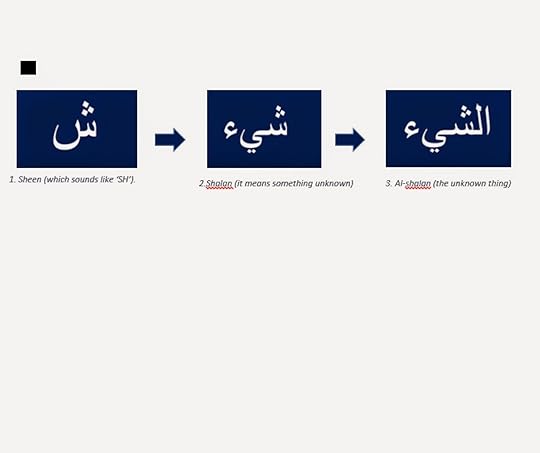

 The problem for the Medieval Spanish scholars who were tasked with translating this material was that the letter ‘sheen’ and the word ‘shalan’ couldn’t be rendered into Spanish because Spanish didn’t had that "sh" sound. So by convention, they created a rule in which they borrowed “ck" sound, from the classical Greek in the form of the letter Chi (lowercase). Later when this material was translated into a common European language, which is to say Latin, they simply replaced the Greek ‘chi letter’ with the Latin X. And once that happened, once this material was in Latin, it formed the basis for mathematics textbooks for almost 600 years.
The problem for the Medieval Spanish scholars who were tasked with translating this material was that the letter ‘sheen’ and the word ‘shalan’ couldn’t be rendered into Spanish because Spanish didn’t had that "sh" sound. So by convention, they created a rule in which they borrowed “ck" sound, from the classical Greek in the form of the letter Chi (lowercase). Later when this material was translated into a common European language, which is to say Latin, they simply replaced the Greek ‘chi letter’ with the Latin X. And once that happened, once this material was in Latin, it formed the basis for mathematics textbooks for almost 600 years. But now we have the answer to our question. Why it that X is the unknown? X is the unknown because we can't say "sh" in Spanish. Well that was a little a bit amusing too.
References: 1. TED Talk by Terry Moore2. Web: http://todayifoundout.com/
Published on May 01, 2015 23:33



